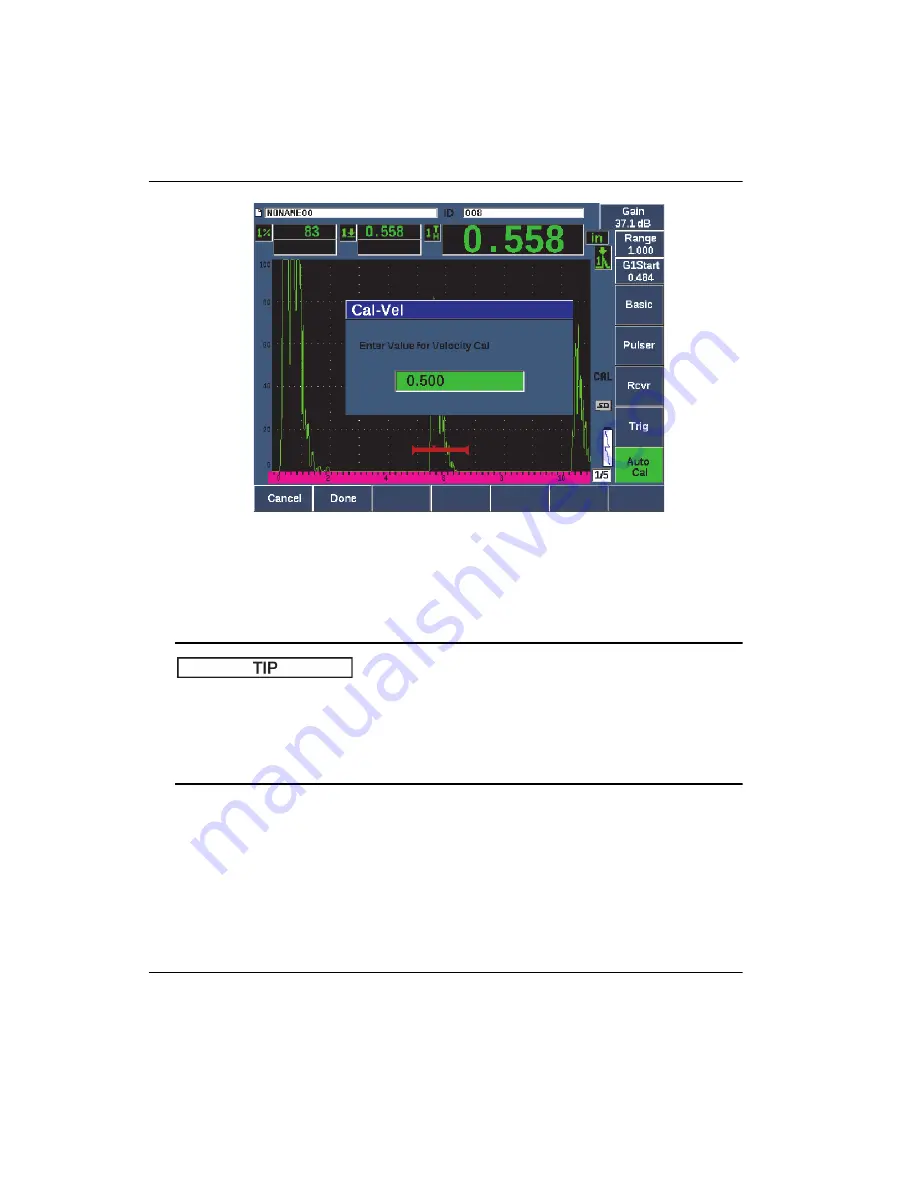
DMTA-10055-01EN, Rev. A, February 2015
Chapter 9
150
Figure 9-4 Entering the Velocity Cal thickness value
13. Adjust the value to match the known thickness of the gated indication (0.500 in. in
this example), and then choose
Done
(P2 key) to complete the calibration process.
It is possible to auto-cal on a test block with only one known thickness. In this
scenario, leave the transducer coupled on the unique thickness, move the gate over to
one of the multiple back-wall echoes, and then enter the correct sound path thickness
(the appropriate multiple of the first back-wall echo) during the velocity portion of the
calibration.
9.4
Calibrating with a Delay Line Transducer
The sample delay line calibration described below is performed using Olympus
transducer part number V202-RM, with a frequency of 10.0 MHz and an element
diameter of 6 mm (0.25 in.).
Summary of Contents for EPOCH 650
Page 12: ...DMTA 10055 01EN Rev A February 2015 List of Abbreviations xii...
Page 30: ...DMTA 10055 01EN Rev A February 2015 Introduction 18...
Page 54: ...DMTA 10055 01EN Rev A February 2015 Chapter 1 42...
Page 84: ...DMTA 10055 01EN Rev A February 2015 Chapter 3 72...
Page 126: ...DMTA 10055 01EN Rev A February 2015 Chapter 5 114...
Page 148: ...DMTA 10055 01EN Rev A February 2015 Chapter 7 136...
Page 154: ...DMTA 10055 01EN Rev A February 2015 Chapter 8 142...
Page 236: ...DMTA 10055 01EN Rev A February 2015 Chapter 10 224...
Page 332: ...DMTA 10055 01EN Rev A February 2015 Appendix B 320...
Page 342: ...DMTA 10055 01EN Rev A February 2015 Appendix C 330...
Page 346: ...DMTA 10055 01EN Rev A February 2015 Appendix D 334...
Page 362: ...DMTA 10055 01EN Rev A February 2015 Index 350...
















































